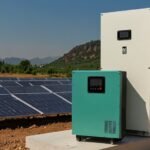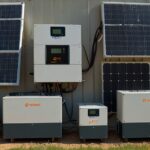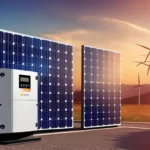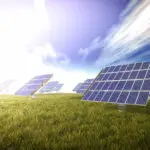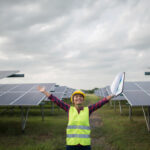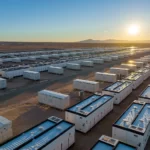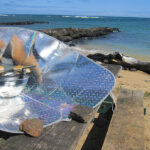Solar farms, also known as photovoltaic (PV) power plants, are shining stars in our pursuit of clean and sustainable energy solutions. As the world turns to renewable energy sources, the demand for solar power continues to rise. In this comprehensive exploration of solar farms, we will not only understand what they are but also delve into the various types of solar farms and the crucial solar farm land requirements that make them tick.
What Is a Solar Farm?
At its core, a solar farm is a large-scale installation of photovoltaic (PV) panels designed to capture sunlight and convert it into electricity. These sprawling fields of solar panels are often located in areas with ample sunlight, and they play a pivotal role in generating clean and renewable energy. Solar farms can range from small community projects to massive utility-scale installations, but their goal remains the same: to harness the power of the sun to create sustainable electricity.
Types of Solar Farms
Before you build a solar panel, you must know that solar farms come in various shapes and sizes, each tailored to specific needs and environmental conditions. Here are some common types:
Utility-Scale Solar Farms
Description: These are large solar farms typically owned and operated by utility companies. They can generate hundreds of megawatts of electricity and are designed to feed power directly into the electrical grid.
Land Requirements: Utility-scale solar farms require substantial land, often spanning hundreds or even thousands of acres. The precise land requirements depend on factors like panel efficiency, technology type, and location.
Community Solar Gardens
Description: Community solar gardens are designed to serve local communities and households. They allow individuals or businesses to buy or lease panels in a shared solar installation, receiving credit for the electricity generated on their utility bills.
Land Requirements: These solar farms are typically smaller in scale, making them suitable for areas with limited available land. Land requirements vary but are generally more modest compared to utility-scale projects.
Floating Solar Farms
Description: Floating solar farms are installed on water bodies like lakes, reservoirs, and ponds. They offer an innovative solution to land constraints and can help reduce water evaporation.
Land Requirements: Since they utilize water surfaces, floating solar farms eliminate the need for significant land resources.
Bifacial Solar Farms
Description: Bifacial solar panels can capture sunlight from both sides, enhancing their efficiency. Bifacial solar farms use these panels to maximize energy production.
Land Requirements: Bifacial solar farms may require less land than traditional solar farms because they can generate more electricity from the same footprint.
Solar Farm Land Requirements 2023
Generally speaking, a solar farm using crystalline silicon panels requires around 3-10 acres of land per megawatt (MW) of installed capacity. This means that a 100 MW solar farm would require around 300-1,000 acres of land. However, the amount of land required for a solar farm depends on several factors, including the type of technology used, the location, and the size of the project.
However, it’s important to note that not all of the land within a solar farm is actually covered in panels. The panels themselves take up only about 50% of the total area, while the remaining space is needed for access roads, maintenance areas, and other infrastructure and vegetation in solar farms. Additionally, many solar farms include features such as wildflower meadows or sheep grazing areas, which can help to promote biodiversity and reduce maintenance costs. Therfore, it’s crucial to design your solar farm in an effective manner.
Factors Determine Solar Farm Land Requirements
The amount of land required for a solar farm depends on several crucial factors:
- Technology Type: The choice of solar panel technology significantly impacts land requirements. Crystalline silicon panels, the most common type, usually need between 3 to 10 acres of land per megawatt (MW) of installed capacity. However, newer technologies may require less space.
- Panel Efficiency: More efficient panels can generate the same amount of power with fewer panels, reducing land needs.
- Location: Areas with higher solar irradiance can generate more electricity per unit of land, thus reducing the overall land requirements.
- Infrastructure: Solar farms require space not only for panels but also for access roads, maintenance areas, and other infrastructure. This additional space can constitute a substantial portion of the total land area.
- Environmental Considerations: Environmental regulations and land-use policies can influence the choice of solar farm locations. Protecting sensitive habitats and adhering to zoning regulations are essential considerations.
- Energy Storage: If a solar farm incorporates energy storage systems like batteries, additional land may be needed for their installation and safety requirements.
Conclusion
Solar farms are pivotal in our transition to clean and renewable energy sources. Understanding their types and the complex nature of land requirements is essential for sustainable development. As the world seeks greener energy alternatives, solar farms offer a beacon of hope. They not only generate clean electricity but also provide opportunities for innovation and conservation. Balancing the challenges and opportunities they present will be key in unlocking their full potential on our path towards a more sustainable future.


